
Tri Nguyen
tri@trilmn.comDesign Leadership
What i did as a design leader at Anduin
When working solo, it’s very easy to plan, to work, to evaluate, to make decision on everything. You know yourself and the work best. Working in a team, acting as a person in charge, you have to know strengths and weaknesses of your teammates. You have to know what makes them happy and what’s not, what brings the most value out of their creative minds. Designer is a picky type of character.
Anduin needed more design leadership back then, so i took the challenge.
My leadership at Anduin went through these organic steps:
- Scale up the team: Recruit more designers to handle more work.
- Manage & improve team performance: Maximize team's productivity.
- Nurture talent: engage and improve individuals.
1. Scale up the team
Company grows, work is multiplied. More works mean more teammate you’re gonna need. Switching from a solo designer, i have to plan on how to recruit new designers. This includes:
- Prepare job description so that new guys know why they should join the team.
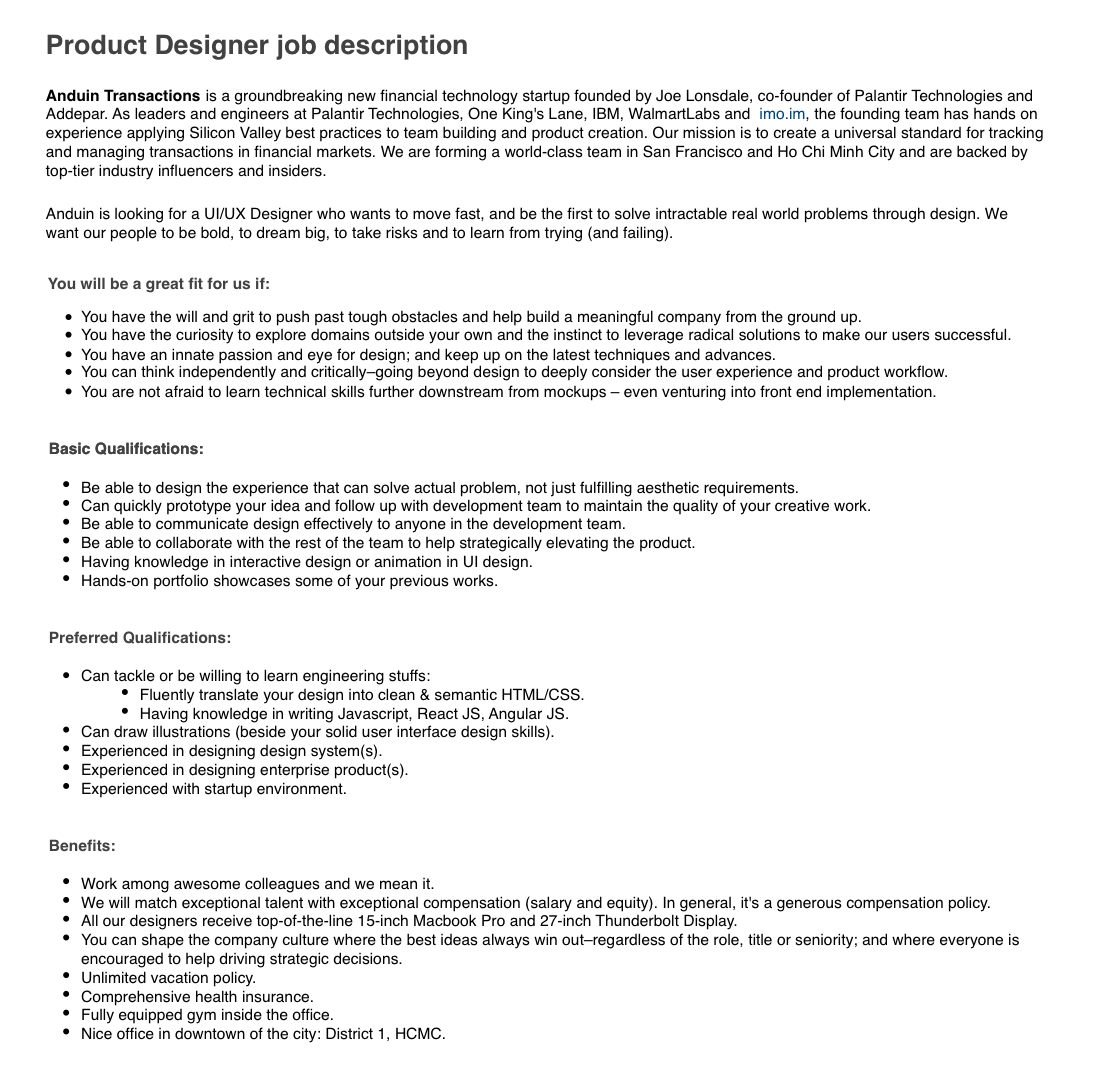 Sample of a job description i wrote on the early days
Sample of a job description i wrote on the early days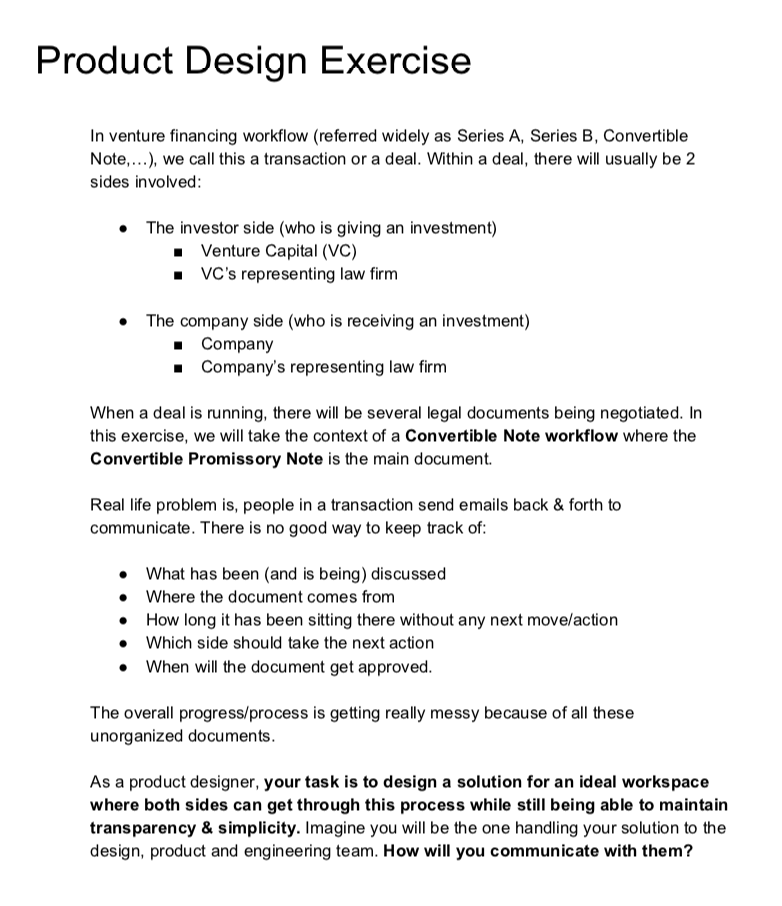 Sample of a Design exercise. We don’t want to just rely 100% on CV and portfolio.
Sample of a Design exercise. We don’t want to just rely 100% on CV and portfolio. - Evaluating candidate together is important. When to say no, what are red flags,…For example: one of our big red flag is not being able to talk/describe deeply about your previous works - This means your hand didn't get dirty enough. Thanks to RecruiterBox for making this process easier for interviewers. We put our evaluations on RecruiterBox before gathering altogether into a room and discuss about a candidate.
- With a limited pool of designers in Vietnam, it's a bit challenging to find qualified candidates.
Hiring was never be an easy work, it takes practices to be better. Luckily, all interviews went quite well so far that even if interviewees did not pass, some of them all came back and said thanks to me specifically for being clear and nice to them.
2. Manage & improve team performance
Having a bunch of designers together doesn’t mean you will produce productive works right away. I had to think who can do what, who can help who (you as a leader will have to help everyone in your team including yourself already, of course), even who sit next to who so that they feel the most comfortable.
Even from day one, they should feel like this is the workplace where they will do their best.
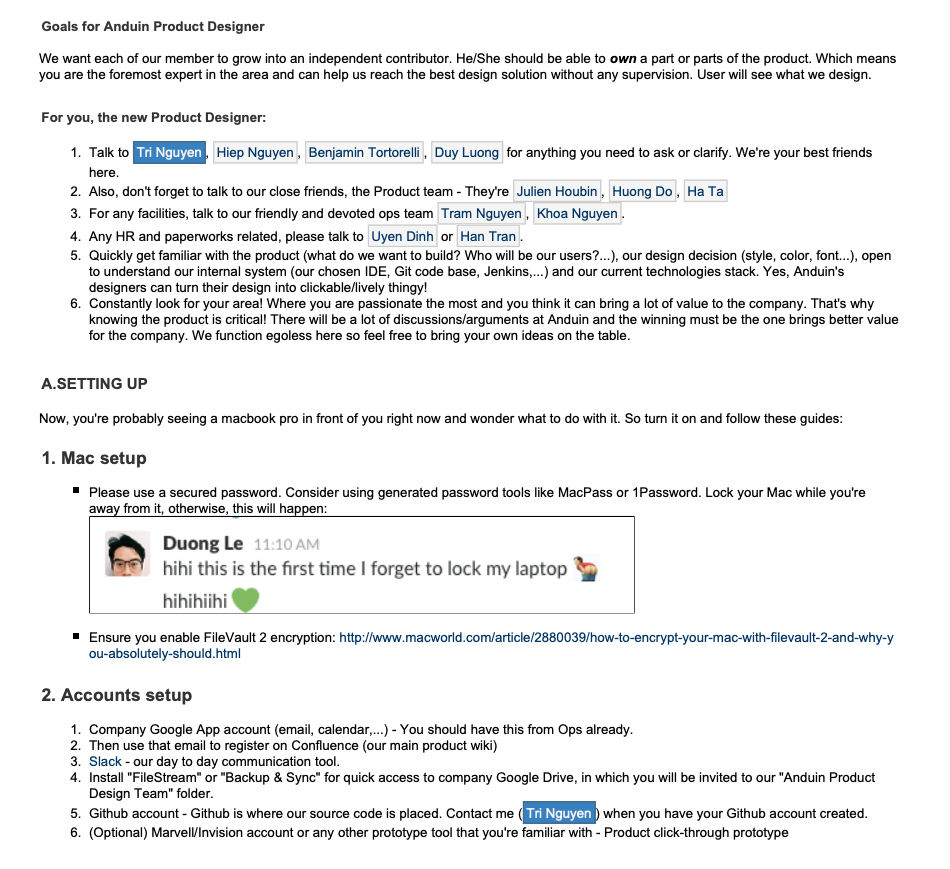
The ultimate goal is, over the time working in the team, they will learn something for themselves. The more they can learn, the better the team is, and they become better also.
2.1 Define team values helps nurturing team culture
From my experience, i believe a good culture will maximize productivity. So, when i have a chance to build culture, i told myself: at the very least, my team should have the best environment to work in as long as i still be part of it. So i was pursuing these values for Anduin design team:
- Trust: Each team member should have trust on each other’s skill. Just like a sport team, people play in different positions and earn a total trust from their teammate for that position. Having trust, the feedbacks/ideas you received will be more correct and tend to be more collaborative. Being a leader, you have to constantly improve yourself so that you know what to talk to different position in your team. When divide the work, I make sure each designer will have 1 big project/feature to work on. So that they don’t feel left out and have a belief that they can do something big and important.
- Fairness: When trusting each others, it’s easier to play fair in the team. If Ben trusts me, whenever i give improvement-needed critique to his design, he will take it gratefully and send me back his argument more honest and constructive. Once Leo sees this positive thing from me & Ben, he and Ben will do the same. This dominos effect does work nicely once you have trust in your team.
- Transparency: The information my teammate knows should be similar to mine. Consider myself as a connection dot between company and its employees, usually after every leadership council meeting (yea, we call the leads meeting like that Anduin), i always write a short recap to my guys immediately. I encourage my guys and the CEO to create chance to talk to each other directly. I hate seeing a gap between people in the company just because the level they carring. At the end of the day, they’re both normal human anyway.
- Responsibility: I don’t want any designers in my team will be managed by me. I want them to be the owner of their works. Their works will help the company just like mine. So why would i need to tell them what they have to do, if i trust them already?
You know it works when your teammate start doing the same things just like you do. I’m really happy to see my fellow designers carry on these values until today and it engages us very well.
2.2 Processes will help, but keep them light
I believe nobody likes processes, unless there’s no other way.
Here’re design processes that i really like:
Weekly sync up
To keep everyone in synced, we created a weekly sync up on each Friday. We’re thinking it’s a good chance for us to review the week and prepare better for a new week. This is not to mention in early of every week, we’re all packed with other meetings. So we try to avoid that precious time slot.
Sometimes, in a sync up, i included a pre-registered share-out from team member, this can be anything from the book you like to the interesting website you found recently with cool animation. A chance to learn from each other.
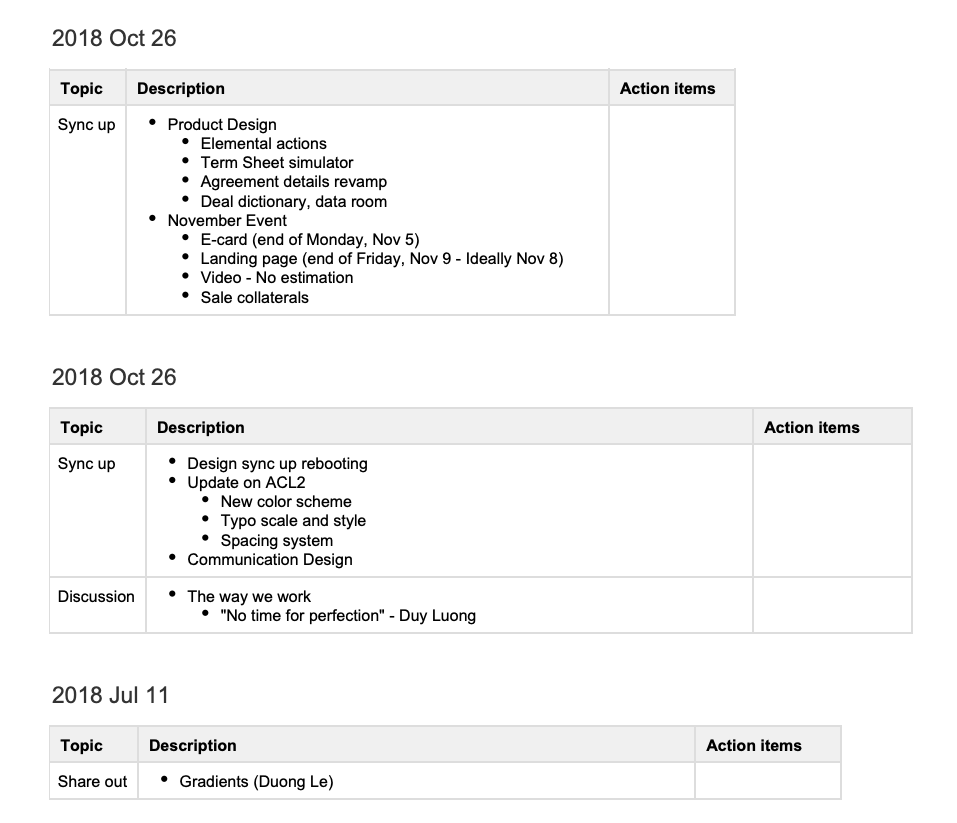
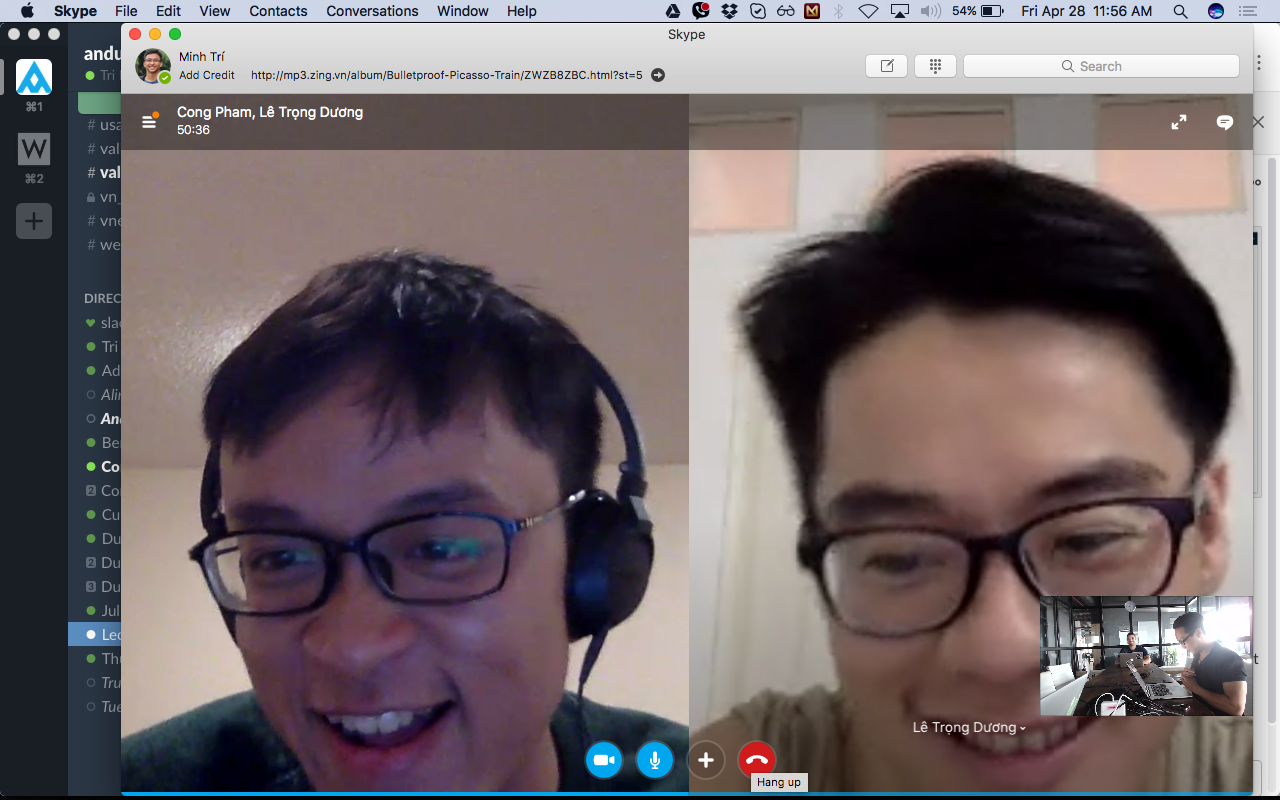
Pair designers
Described in the `Trust` section, 1 designer will have at least 1 important feature/product in his hand. We found out that’s not enough. That designer need a buddy to constantly share/discuss about his work. Gathering all team members will be really time consuming for day to day work. Having a pair will also add a backup solution for the main designer when he’s not around. It’s likely to have 2 designers (sometime 3) working with a feature rather than solo. Pair assignment will be discussed among teammates.
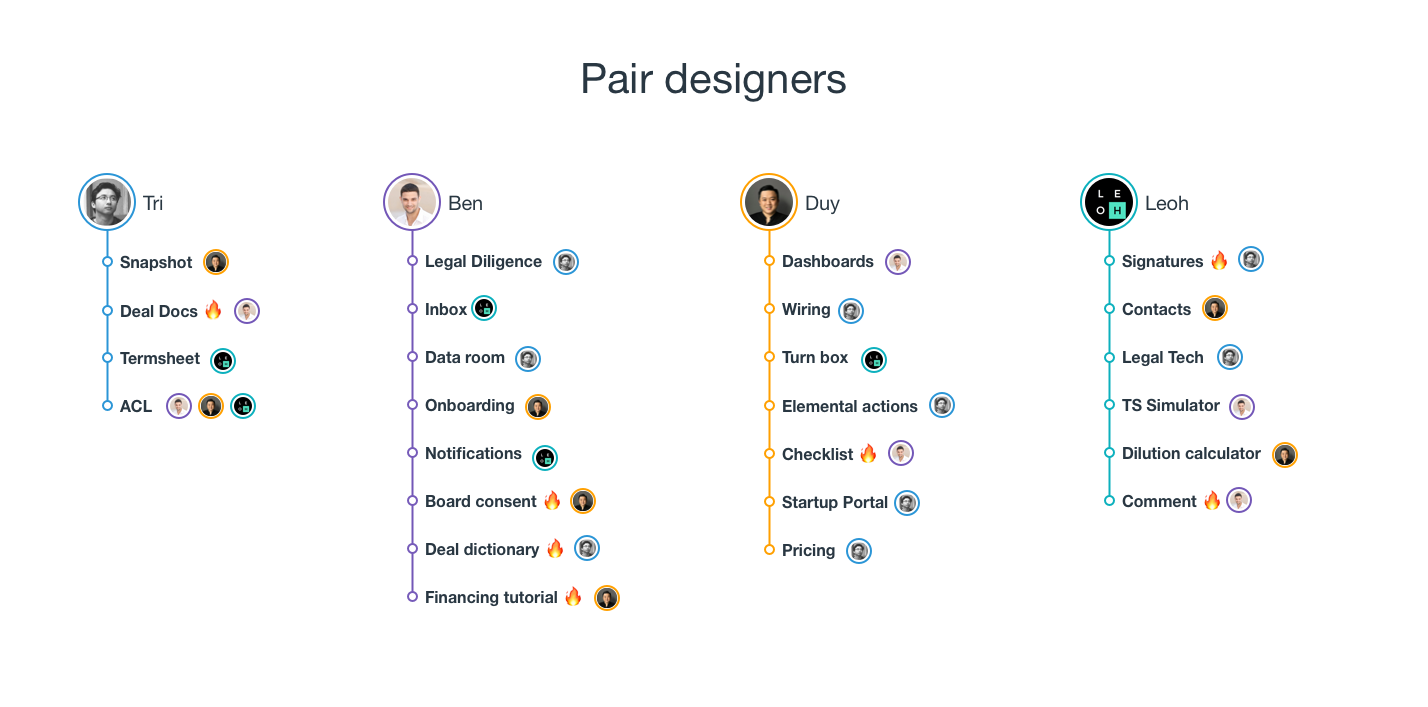
2.3 Having fun is important
With engagement, each of us always wants to improve ourselves, but work sometimes so pressure and having constrains. We initiate fun, small project to help us stay creative.

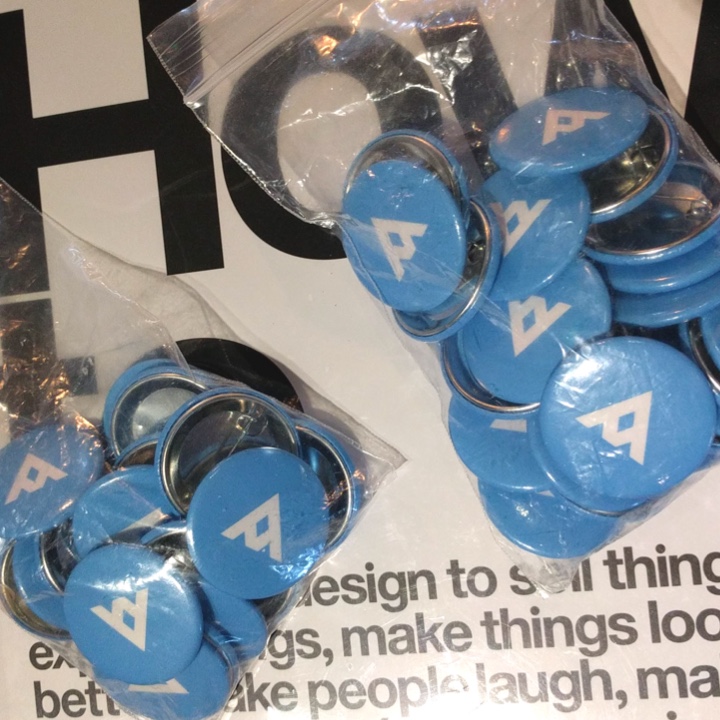
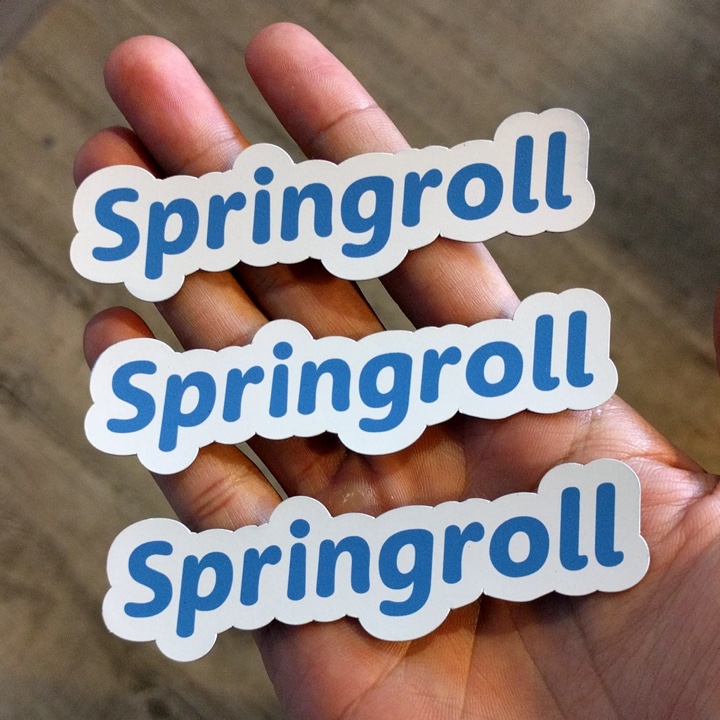
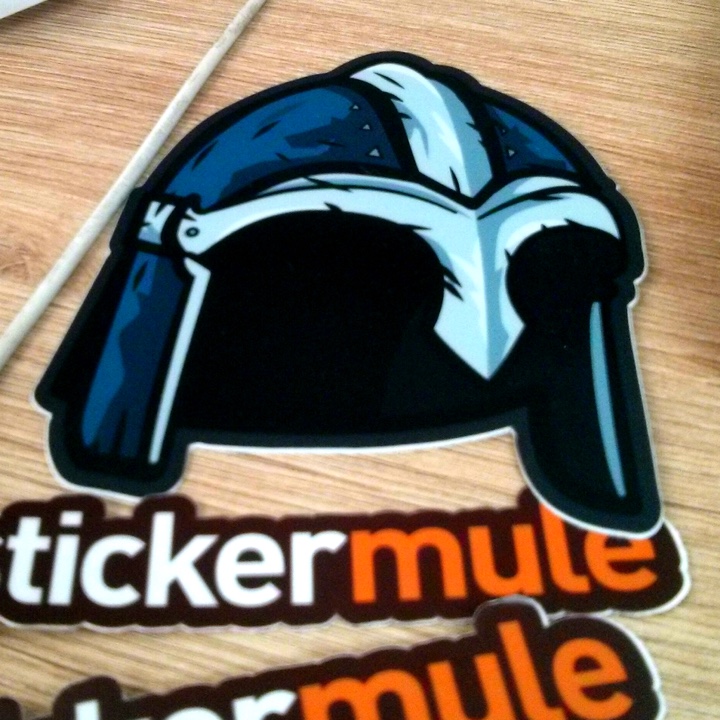
Making t-shirts
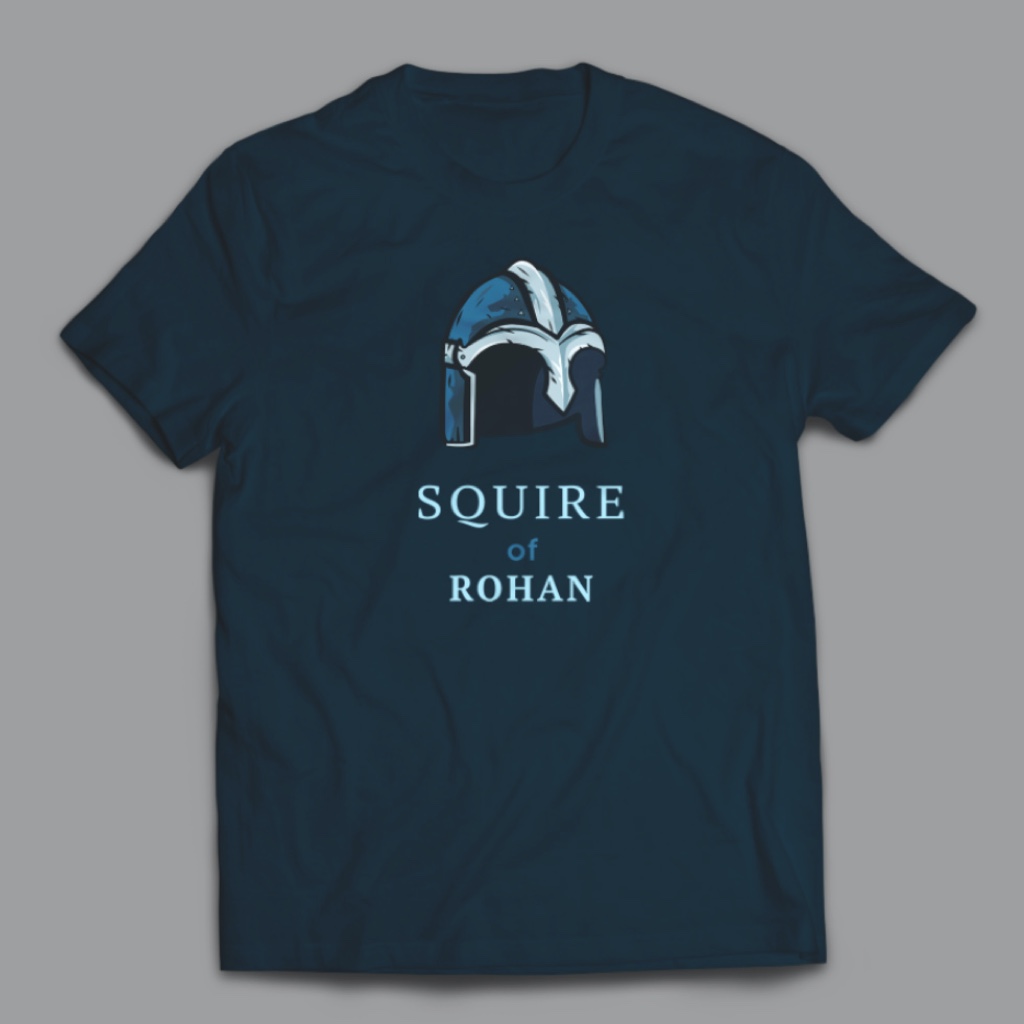
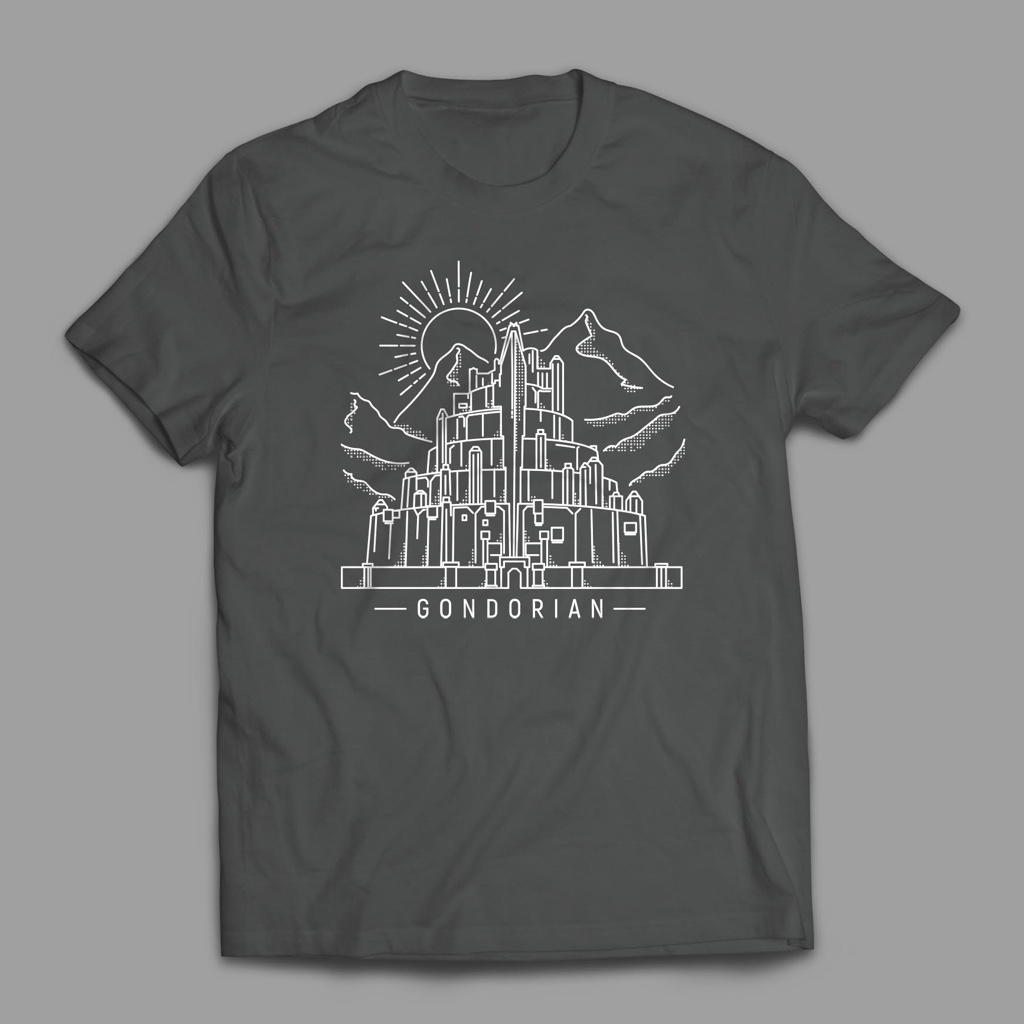
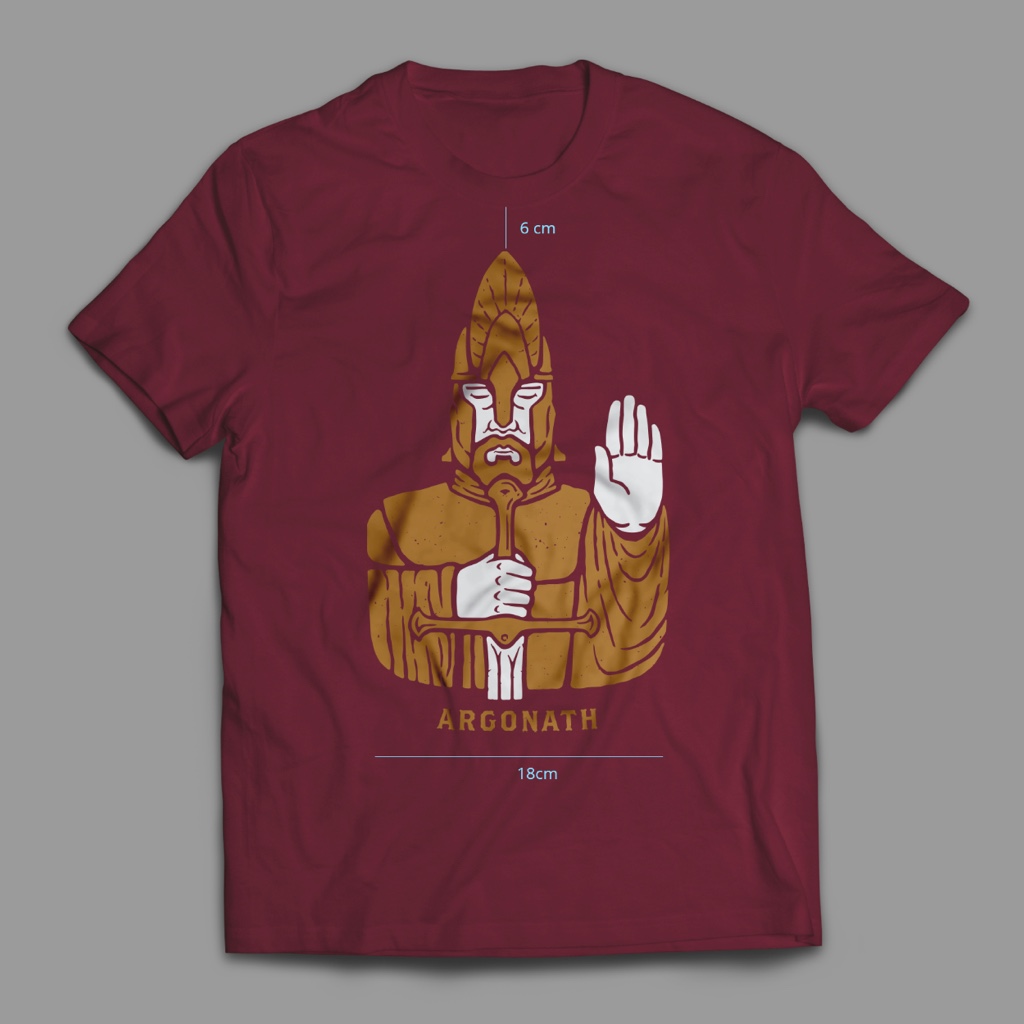
2.4 Tribute back to community
I see 2 main benefits from this:
- Teaching people is a chance to review your knowledge.
- Growing new generations helps future community and talent pool.
And when i say tributing i really mean it, not just to attend to a design event and network with people. I want all of my team to do this, not just me represent the team.
So we end up having something like:
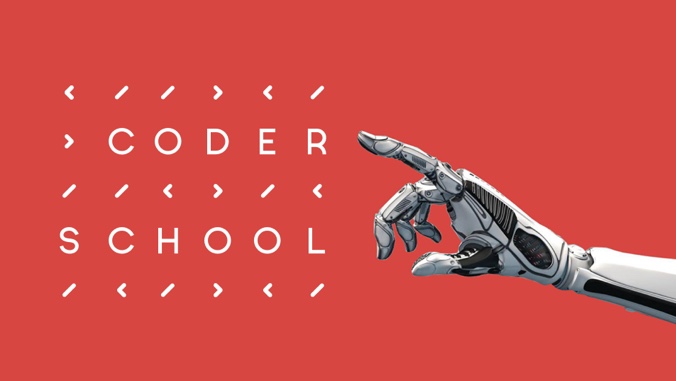 Ben, Leo to act as advisors for CoderSchool, a bootcamp for new developers, designers.
Ben, Leo to act as advisors for CoderSchool, a bootcamp for new developers, designers.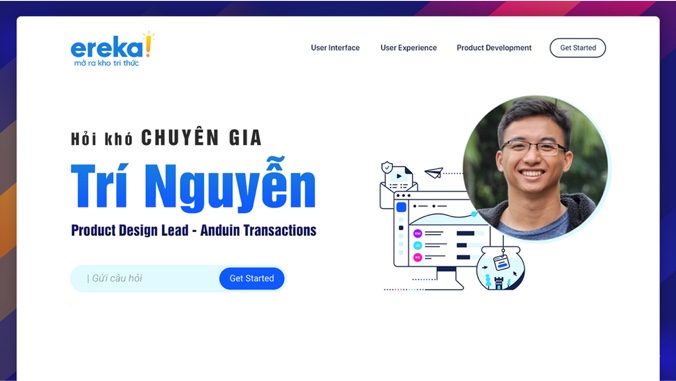 Me hosted an AMA about product design on Ereka, a quora-like platform.Link here-in Vietnamese, sorryUpdated (Aug 2020): This platform is down
Me hosted an AMA about product design on Ereka, a quora-like platform.Link here-in Vietnamese, sorryUpdated (Aug 2020): This platform is down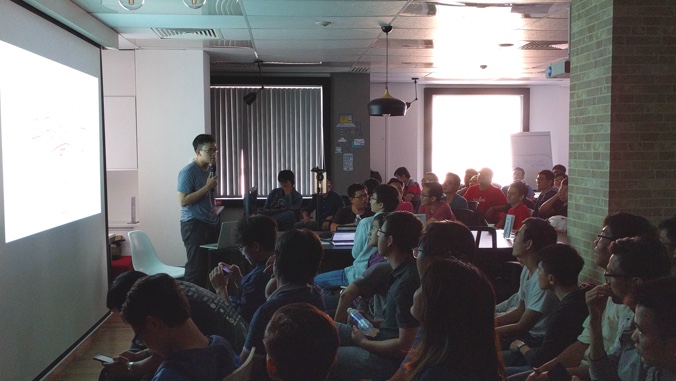 Cong's presenting CSS Grid at Grokking Engineer event
Cong's presenting CSS Grid at Grokking Engineer event
3. Nurture talent
One on One
One on one (1-1) is a pretty popular driver nowadays between direct manager and employee. It’s also part of Anduin policy.
Here’s my way of doing it:
Within 3 weeks, i make sure i have one 1-1 session with each designer. This should happen outside the office during working hour, can be anywhere. It’s part of the work anyway. I use this chance to understand individual designer more:
- to listen to their problem
- what they hate but couldn’t speak out
- to coach them on what i think they can do better
- shout out to what they did good
- to listen from your suggestion of how i can be better
My goal after each 1-1 is that both of us feel motivated and happy to get back to work.
There’s a time right after a 1-1, i have Duy wrote up a Sketch plugin similar to Content Generator to render our special data. Or, Ben sent out a quick design deliverables checklist. Really happy with this.
Let's not forget to coach them out
Things do not always work. Sometimes your day-to-day buddy can’t find enough motivation to keep up with the work. It’s time to let him go. Before doing that, i make sure i understand his problem from multiple perspective (including his), give him trials on performance plan. If things still don’t work out, we sit dow, talk and i motivate him with next career advices.
Having a selective hiring saves me here. It makes me understand what a current hire can capable of. If he’s underperformed, usually it’s not a good environment for him anymore. To me, coaching people out will help them save their dignity and be better later on. This also reduce a burden on company side. Win-win
Wrapping up
Over 4 year leading product design at Anduin, i’ve learnt a lot, done a lot. I have a solid, engaged and high-performance team always ready for any design challenge. I've made it clear that i’m trying to lead them, not manage them. I've earned their trust and respect.
My teammates can work as individual contributors or together as a team depends on the need. They’re also the co-owners of the team and the work. The kind of owner that can keep thinking on how to improve the team and provide honest feedbacks and contributions, even when i'm not there.